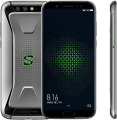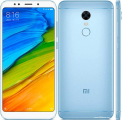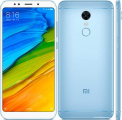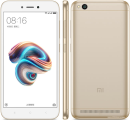
Xiaomi Mi Mix 256 GB Prices
Important Note.
- All prices are in Pakistani Rupee (PKR)
- Prices may vary at stores and our effort will be to provide you with the updated prices.
- The latest price of Xiaomi Mi Mix 256 GB was obtained on 17 مئی, 2019. The prices at the original stores had been updated on the respective mentioned dates.
- Find out WhatMobile price has dropped in Pakistan by selecting Notify Price Drop button
- Find out WhatMobile has better specifications by clicking Add To Compare Button find out what Mobile has better reviews by visiting our reviews section
- Find out WhatMobile is cheaper on which retailer by clicking Compare prices from retailers button
Search Terms
- Xiaomi Mi Mix 256 GB
Specifications
| GENERAL | |
| 2G Network | GSM 850 / 900 / 1800 / 1900 - SIM 1 & SIM 2 |
|---|---|
| 3G Network | HSDPA 850 / 900 / 1900 / 2100 |
| 4G Network | LTE band 1(2100), 2(1900), 3(1800), 4(1700/2100), 5(850), 7(2600), 8(900), 38(2600), 39(1900), 40(2300), 41(2500) |
| Sim | Dual SIM (Nano-SIM, dual stand-by) |
| Announced | 20/10/2016 |
| Status | Available. Released 2016, November |
| BODY | |
| Dimensions | 158.8 x 81.9 x 7.9 mm (6.25 x 3.22 x 0.31 in) |
| Weight | 209 g (7.37 oz) |
| DISPLAY | |
| Display Size | 6.4 inches, 108.7 cm2 (~83.6% screen-to-body ratio) |
| Resolution | 1080 x 2040 pixels, 17:9 ratio (~362 ppi density) |
| MultiTouch | Yes - MIUI 8.0/ 8.2 |
| SOUND | |
| AlertTypes | Vibration; MP3, WAV ringtones |
| LoudSpeaker | Yes |
| 3.5mm jack | Yes - Active noise cancellation with dedicated mic |
| MEMORY | |
| CardSlot | No |
| Internal | 256 GB, 6 GB RAM |
| DATA | |
| GPRS | Yes |
| EDGE | Yes |
| Speed | HSPA 42.2/5.76 Mbps, LTE-A (3CA) Cat12 600/150 Mbps |
| WLAN | Wi-Fi 802.11 a/b/g/n/ac, dual-band, WiFi Direct, hotspot |
| Blue Tooth | 4.2, A2DP, LE |
| NFC | Yes |
| USB | Type-C 1.0 reversible connector |
| CAMERA | |
| Camera Primary | 16 MP (f/2.0, 1/3", 1.0 µm), gyro EIS, phase detection autofocus, dual-LED dual-tone flash |
| Camera Features | Geo-tagging, touch focus, face detection, HDR |
| CameraVideo | 2160p@30fps, 1080p@30fps, 720p@120fps |
| CameraSecondary | 5 MP, f/2.2, 1080p@30fps |
| FEATURES | |
| Processor Cores | Quad-Core |
| OS | Android 6.0 (Marshmallow), planned upgrade to 7.0 (Nougat) |
| CPU | Quad-core (2x2.35 GHz Kryo & 2x2.19 GHz Kryo) |
| Sensors | Fingerprint (rear-mounted), accelerometer, gyro, proximity, compass, barometer |
| Messaging | SMS(threaded view), MMS, Email, Push Mail, IM |
| Browser | HTML5 |
| Radio | No |
| GPS | Yes, with A-GPS, GLONASS, BDS |
| Colors | Black, White |
| Others | - Fast battery charging (Quick Charge 3.0) - XviD/MP4/H.265 player - MP3/WAV/eAAC+/Flac player - Photo/video editor - Document viewer |
| BATTERY | |
| Battery | Non-removable Li-Ion 4400 mAh battery |
| MISC | |
Reviews

Xiaomi is often called the Apple of China, but the company has just announced a phone that features one of the iPhone 8’s biggest expected features
Apple’s iPhone 8 – or, iPhone 7s – is expected to be a big deal. It’s no secret that Apple nixed plenty of features from this year’s iPhone 7 and iPhone 7 in order to make next year’s iPhone even better.
Big design changes are coming to the iPhone and the most notable of which is expected to be an all-screen design for the frontage, sans the company’s traditional home button. All well and good… but here’s the problem for Apple: Xiaomi has just done this with its Xiaomi Mi Mix, a full 12 months before the launch of Apple’s iPhone 8.
And what Xiaomi has come up with here is utterly stunning… I mean just LOOK at it! The damn thing looks like a concept phone!
The Xiaomi Mi Mix will be available in November for just over $500, making it suitably cheap – even by Xiaomi’s usual standards. The Xiaomi Mi Mix features a 6.1in display and the frontage of the phone is ALL display; we’re talking 91.3% coverage here. A first for a mobile phone.
With specs, the Xiaomi Mi Mix packs in impressive stuff as well: a Snapdragon 821 chipset paired with 4GB of RAM and 128GB of storage. The camera is a 16MP unit and Xiaomi has outfitted the phone with a 192Hz / 24-bit DAC chip, dual-SIM support, and a 4,400 mAh battery.
As we said earlier, the Xiaomi Mi Mix goes on sale in November. However, this is something of a “project” for Xiaomi, it wanted to be the first to do something like this with display tech, so it isn't certain how many units will be available once it gets official.
This thing is innovative as hell. Nothing in the phone market looks quite like the Xiaomi Mi Mix – and that’s exactly what Xiaomi set out to do. Ex-Google man, Hugo Barra tweeted images of the phone and hyped its world’s first status on Twitter earlier this week.
Xiaomi Setting Up Shop In US From 2017?
Rumours of Xiaomi's expansion into the US are ALL true. It will happen and it could be as early as next year. Obviously there are some issues that need to be resolved first; things like making sure Xiaomi phones are compatible with US network bands and having a US base of operations. But once these are done, the company will be able to release phones in one of the biggest markets in the world.
"This means Barra and his team have to practically start from scratch," notes Engadget, "in the sense that they have to learn everything about the testing methods and be physically set up shop in the US. The company has embraced the idea of going global under Barra's guidance, and Xiaomi is finally willing to make the investment, but he reckoned it will take a year or two before the company is ready for the US. Barra didn't reveal when exactly his team started this project, but based on his mention of a couple of test devices, my guess is that a US launch may happen as soon as 2017."
"Earlier this year we had a special version of Mi 5 that we made just for testing in the US, just so that we can start testing and doing small-field trials to sharpen our chops, if you will," Barra said. "And now we have Mi Note 2 which is another device that we can use for some field testing in the US. That's again just another small step in the right direction or in the direction of being able to launch full-on products there."
You can see a the full break-down of the phone in the video below:
Write Your Own Review
My Recent Reviews
- Be first to post review for this product.
comments powered by Disqus




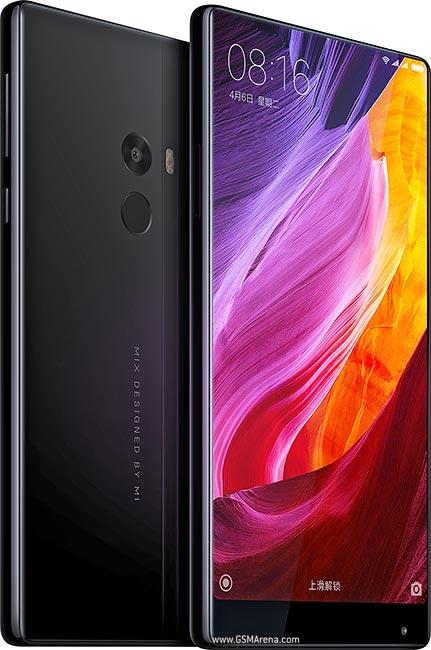



.jpg)
